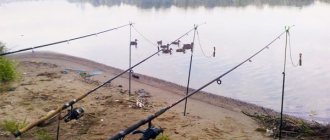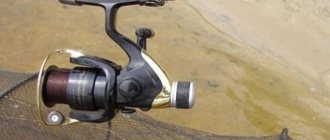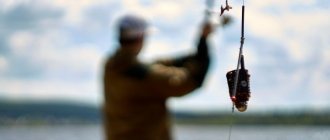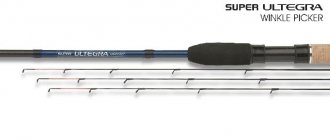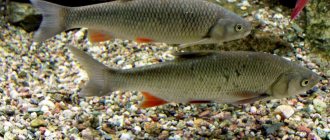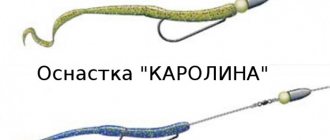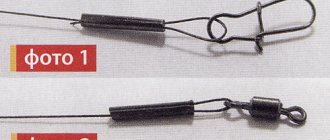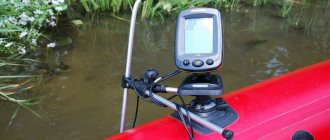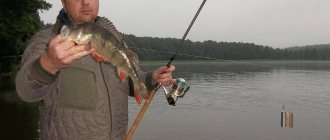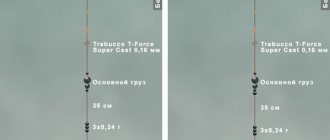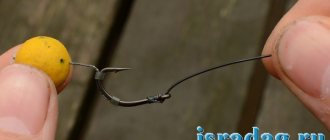The Lena is one of the longest rivers on our planet. It is impossible to imagine the northern expanses of Russia without this beauty. Dense taiga and dense coniferous thickets stretch along the banks of the Lena. It is thanks to this river that our country is considered one of the richest states in the world in terms of natural resources. This huge waterway gives people gold, diamonds and furs.
Where is the Lena River
It originates not far from Lake Baikal. Heading towards Yakutsk, this river makes a big detour and then flows to the northern regions of Russia. Its length is approximately four thousand kilometers. On the map, the territory where the Lena River is located includes seven constituent entities of the Russian Federation. It flows through the Irkutsk and Amur regions, through the Krasnoyarsk, Khabarovsk and Transbaikal territories, through Buryatia and Yakutia. Its maximum depth is twenty-two meters.
The mighty Lena is fueled by melted snow and rain. In spring it overflows. Unlike many other Russian rivers, the Lena experiences severe ice cover. As a result, congestion often forms in the spring, leading to flooding. During this period, the water level increases to ten meters.
This river is one of the most environmentally friendly on the planet. The man did not change its course. To date, not a single hydroelectric power station has been built along the river, there are no dams or other structures. In those places that are not inhabited by humans, environmentalists allow drinking water directly from the stream.
River basin
More than 800 tributaries of various sizes flow into the delta. Along the entire length of the river there are many islands of different shapes and sizes. Along the entire length of the river, road connections are poorly developed. But the river is navigable. This has led to a decrease in the quality of the water and the fish in it. Several enterprises and settlements discharge wastewater into the river. Throughout the basin, the landscape changes from plateaus to hills and ridges.
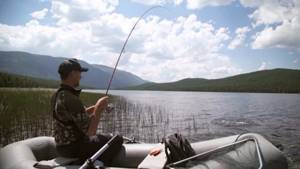
The river and its tributaries are fed with water from melt water after winter and rains. Heavy rain and snow cause large floods in the spring. In winter, unlike other rivers in the country, severe congestion occurs on the Lena. Cold winters create thick and extremely durable ice. Ice drift creates jams and floods large areas with water. The earliest spill occurs near Kirensk in the upper section of the river. Over time, the northern sections begin to open up, reaching the lower reaches closer to July. In the main part of the reservoir, the water rise is 8 m, and in the lower reaches it can reach 20 m.
Go fishing on Lena
The river flows into the Laptev Sea. A huge number of representatives of ichthyofauna live in it. Apparently, this is why fishing on the Lena brings such great pleasure. The most valuable trophy is the Siberian sturgeon.
Along the banks of the river there are many amazingly beautiful picturesque places where you can relax and go fishing. Fishing here is usually done with a regular float rod or spinning tackle. Fishing on the Lena gives you the opportunity to break away from the hustle and bustle of the city, calm your nerves, enjoy the beautiful expanses of this mighty river and return home with a rich catch.
Inhabitants of the Lena River presentation on the topic
Slide 1
Inhabitants of the Lena River Lena River
Slide 2
In the world ranking of rivers, the Lena ranks tenth and is one of the largest rivers in Russia. Not far from Lake Baikal (about 12 km) there is a small swamp, from which the great river originates. The length of the river is 4400 km, the basin area is almost 25 thousand km². It flows into the Laptev Sea. The Lena begins in the mountains in the south of Siberia and, having cut through it all from south to north, flows into the Laptev Sea. The length of Lena is 4,400 km. Throughout its entire length, the Lena flows through areas of permafrost.
Slide 3
Approximately 90 km above Yakutsk, the nature of the current changes sharply. Lena calms down and carries its waters smoothly and unhurriedly, not a trace remains of the wayward mountain river
Slide 4
Lena River fish productivity of reservoirs is determined by the state of stocks of the dominant fish species; for the Lena they are omul, muksun and vendace. In total, 37 species of fish live in the river basin. The Siberian sturgeon is an atypical species, has river and lacustrine-river forms, inhabits the section of the Lena River from the village of Korshukov (below Kerensk) to the seaside; benthos and fish organisms (dace, roach) serve as food for the sturgeon. The sturgeon does not make large feeding and spawning migrations.
Slide 5
Taimen in the basin of the Lena River itself is distributed from the upper reaches to the delta inclusive. Taimen are a typical predator and form commercial aggregations only during the spawning period and during migration from spawning grounds.
Slide 6
Grayling A genus of fish of the grayling subfamily of the salmon family of the order Salmonidae. A characteristic feature is the large dorsal fin, the rear part of which in mature males, when folded, reaches the adipose fin, and sometimes even the base of the caudal fin.
Slide 7
Nelma The Lena population of nelma is growing and feeding on the shelf in desalinated marine coastal areas in the river delta, in its lower and middle reaches. It rises very high along the river, its spawning grounds are known in the Vitim, Aldan, Olekma rivers and, apparently, in the Nyuya River, where it is often caught. A large spawning ground in the Vilyui River was destroyed as a result of the construction of a cascade of hydroelectric power stations. The path to the spawning grounds of individual schools of fish is over 3 thousand kilometers. Of all the reservoirs in Yakutia, only in the Lena River the population of nelma is in satisfactory condition. But even in Lena, the stocks of nelma are insignificant and the optimal measure to increase the number of the Lena population of the species should be recognized as its artificial breeding.
Slide 8
Tugun within the Lena is distributed from the Iul River to delta areas. It most densely populates the Lena River from Vitim to Soroki Ostrov and the tributaries Chuyu and Vitim. Olekma, Aldan, Vilyui, here it lives permanently, reproduces and is of commercial importance.
Slide 9
Muksun is one of the main commercial species. In the Lena delta there are 4 races of muksun. The semi-anadromous little stamen colonizes the lower sections of the delta ducts. In summer, when salty sea waters are diluted with fresh Lena water, it is distributed mainly in the delta front and shallow waters along the sea coast. In the delta, it predominates in low-water channels in the northwestern part of the delta. Zoobenthos organisms predominate in the food bolus all year round. In the food spectrum, the fundamental organisms are zooplankton and zoobenthos, but fish are also found. The deltaic muksun inhabits all the channels of the delta, and during periods of significant river flow it enters the desalinated zone. According to the nature of the nutrition of the euryphage, the basis of food nutrition is made up of mysids. The water muksun inhabits mainly the upper and middle sections of the delta; they are less common in the lower sections of the delta channels. The diet is based on benthos; detritus and insects are common in the food spectrum. Muksun inhabits all rivers of Yakutia, but is especially numerous in the Lena River delta. Along with vendace and omul, it is always the main object.
Slide 10
Siberian vendace is a typical semi-anadromous fish. It can withstand significant salinity, widely uses food reserves of the desalinated part of the sea shelf and enters the river to reproduce.
Slide 11
Freshwater fish of the whitefish genus. It reaches 0.8 m in size and weighs 16 kg, although on average it weighs 2-4 kg. Distributed in rivers and lakes in northern Russia and the northern provinces of Canada. It can live in semi-fresh water of the bays of the Arctic Ocean. Spawns in autumn, October - November. The diet of the broad whitefish consists mainly of benthic invertebrates. Whitefish is considered a valuable commercial fish.
Slide 12
Every year at the beginning of summer, many thousands of geese and ducks, swans, various waders, gulls and terns gather here on nesting grounds. In total, more than a hundred bird species have been recorded, most of which nest here. The rarest species include the Siberian white crane (Siberian Crane), little swan, white goose, pink gull. Sandpiper - one of the smallest sandpipers, size. In breeding plumage, the bird has white underparts, the front of the chest, crop, throat, sides of the neck and cheeks reddish-ocher color with brown streaks. The feet are black (the similar white-tailed sandpiper has yellow feet). Winter plumage is grayish-brown. Length 12–14 cm, wingspan 28–31 cm, weight 20–30 g, the size of a sparrow.
Slide 13
The Siberian Crane is a species of crane endemic to the northern territories of Russia. Siberian cranes are endangered and are included in the international Red Book of the International Union for Conservation of Nature and the Convention on International Trade CITES, as well as the Red Book of Russia. Currently, the size of the Yakut population of the species (in the wild) is estimated at approximately 2900–3000 individuals. A critical situation has developed with the West Siberian Siberian Cranes - there are about 20 individuals left in the wild.
Slide 14
Seagulls are the most numerous genus of birds in the gull family, living both in the sea and in inland waters. Many species are considered synanthropic - they live close to humans and benefit from this. As a rule, these are large or medium-sized birds, with white or gray plumage, often with black markings on the head or wings. Some of the distinguishing characteristics are a strong beak, slightly curved at the end, and well-developed swimming membranes on the legs.
Slide 15
The white goose is a bird of the goose family of the Anatidae family. They can fly from the age of 42-50 days. Usually active in winter. In Russia, it is distributed on Wrangel Island, in the northeast of Yakutia and Chukotka. This bird is usually white in color. The body is medium-sized, from 60 to 75 cm long, usually no more than 3 kg. The wingspan is 150 cm. Black color predominates at the end of the wings and around the beak. The beak and paws are pink. A golden yellow spot is often noted. Chicks are usually brownish gray
Slide 16
Small swan - very similar to whooper, but smaller in height: body length 115-127 cm and wingspan 170-195 cm. The small swan weighs about 5-6 kg. The voice of a small swan is also similar to the voice of a whooper, only quieter and lower. In addition, the beak of the small swan is more black, while in the whooper, on the contrary, the black color is present only at the tip of the beak.
What kind of fish is found in the river?
Lena, harsh in Siberian style, has a rich food supply. Therefore, in its depths there are forty-two species of fish. In addition, the absence of any economic structures along its banks makes it possible for representatives of the ichthyofauna to reproduce unhindered. Fishing on the Lena often ends with catching large specimens of pike, taimen, nelma and, of course, Siberian sturgeon.
The largest and most valuable fish of the Lena River are Siberian sturgeons. According to experienced local fishermen, at the end of the last century it was possible to pull out even a 200-kilogram specimen about two meters long. Currently, individuals up to twenty-five kilograms are found. Sturgeon are caught using larvae, pieces of meat from small mollusks, and also using crayfish. The habitats of this royal fish are those sections of the river that are located from Korshukovo to the Laptev Sea.
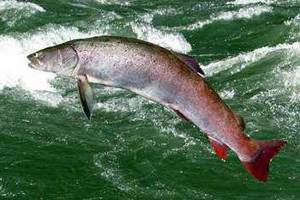
In the lower reaches around its delta, where the water is desalinated, there are the most fishing places on the Lena. Populations of equally valuable underwater inhabitants – muksun and nelma – live here. Fishing on the Lena can result in a catch of large taimen. Here they grow up to seventy centimeters, while weighing more than seven kilograms.
Lena is also home to whitefish, broad whitefish, peled, and Siberian lapushka. A large population of salmon lives in the upper reaches of the river and in the middle reaches, which also spawn here in early June. Many people are attracted to fishing on the Lena River by the opportunity to catch a trophy specimen.
Karbasy: Northern delivery in Lena style
In the old days, the Evenks roamed the upper reaches of the Lena with reindeer, but here a small part of them switched to a sedentary lifestyle, still engaged in hunting and fishing. In the late 19th and early 20th centuries, visiting Cossacks built karbass - rowing transport ships, which were then lowered to Kachug, loaded and sent north to Yakutia, supplying populated areas with food and goods all the way to the Laptev Sea. Today it is called Northern Delivery. One carbass carried up to 40 tons of cargo on board, and holding such a colossus on river rifts and rapids was considered a real art. One of the branches of the Lena is called the Dunkina channel. There is a legend that during one of the raftings the men drank and fell asleep. The steering oar was probably the same Dunya who failed to taxi at the river bend. As a result, the cargo ship crashed and sank, and the channel began to be called Dunkina.
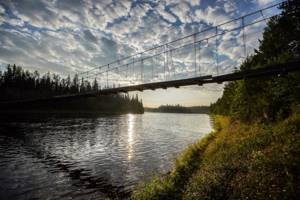
Only craftsmen who identified pine and cedar trees with increased buoyancy were valued higher than rafters. The tree trunks were first split lengthwise, and only then were the sides of the dry cargo ships made. Some karbas bore the names of their creators; the inscription on the side was considered a kind of sign of the quality of river shipbuilders. Despite the costs, the life of the watercraft was short-lived - only navigation. The karbas no longer returned upstream; every year the craftsmen laid new ones. With the development of river shipping, the difficult craft faded into the background, carbas were no longer needed, entire villages lost their jobs, which was one of the reasons for their ruin. In the 40s, Chanchur consisted of about 40 households, and according to the 2010 population census, only one person had local registration - Tikhon Romanovich Gorbunov.
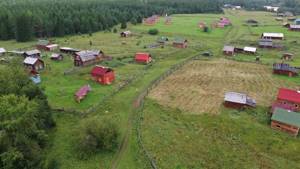
However, the village was revived, a whole street of new houses appeared here - Zapovednaya. The name was born by itself; just a few kilometers away is the border of the Baikal-Lena Nature Reserve.
Chanchur most likely owes its revival to the former senior hunting inspector of the reserve, Vladimir Petrovich Trapeznikov, who popularized this place. He erected a monument to Kurbat Ivanov and the Cossack pioneers who compiled the first map of Lake Baikal in the village. Vladimir Petrovich assures that Kurbat was undeservedly consigned to oblivion, although he did more for Russia than Pokhabov, Beketov and even Dezhnev. As evidence, Trapeznikov cites an extract from Alexei Mikhailovich’s decree on the salary of Kurbat Ivanov “... twelve rubles of money, bread: ten quarters of rye, ten quarters of oats, three pounds of salt...”.
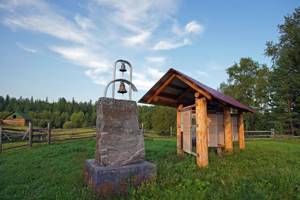
By order of Trapeznikov, the block was partially polished and the inscription “To the Cossack Kurbat Ivanov, the pioneer to Baikal in 1643” was applied. The inscription is supplemented by the saying of the Armenian philosopher Yeghishe: “The memory of the past is a watchtower from which the future can be clearly seen.” The finished monument was delivered to Chanchur along the winter road, and Trapeznikov alone, using winches, hoisted it onto the pedestal. The monument is crowned with two custom-cast copper bells.
Grayling fishing
This fish is found in the upper reaches of the river, in its right-hand tributary areas and in the delta. In winter, grayling moves to a sufficient depth, and in summer it goes to the upper reaches. The Siberian variety of this fish is caught using worms, larvae and flying insects, and sometimes it bites on mollusks. Artificial lures for grayling are also a fairly common bait.
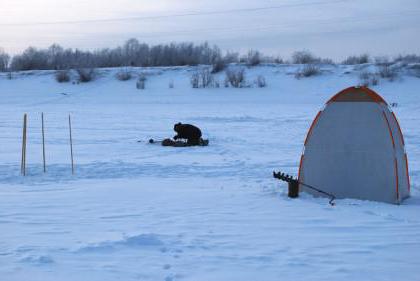
Tackle
Local residents usually fish for pike on the Lena using Siberian spined loach, a fish from the loach family, as well as minnow. In this case, gear is used that is designed to catch fairly large fish. Often they are homemade. Local fishermen have long made them from animal skins, in particular from seal, seal and muskrat skins.
The sheared skins of light badgers or mink paws are also very popular, since the toothy predator can clearly see this gear in the dark water column. Fishermen use both mounted and weighted gear. The main requirement for them is strength. Small fish are used as bait - roach, dace, crucian carp, etc. Moreover, the closer to winter cold, the larger the bait.
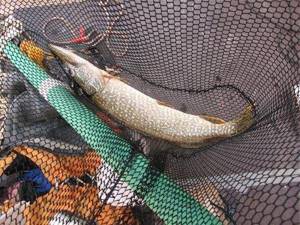
Fishing places
Traditionally, fishing on the Lena and its tributaries attracts lovers of “quiet hunting” not only from our country, but also from abroad. And this is not surprising: there is a lot of prey in the river. In addition, fishing on the Lena, judging by the reviews, is quite exciting and exciting. In Yakutia, this waterway becomes such a powerful and full-flowing river that islands appear on it. And in some places its width reaches several kilometers.
Judging by the stories of “quiet hunting” lovers, fishing in the tributaries of the Lena is no less successful than in the mother river itself. Moreover, sometimes it can give an even richer catch. On Buotam, one of the many tributaries of the Lena, for example, the active fishing season begins in June and lasts until mid-October. Several species of whitefish are found here, as well as pike, lenok, grayling, dace and perch. All of them are excellent objects for spinning fishing.
Belyanka, Undyuling and Dyanishka, the right tributaries, are famous as the best habitats of taimen - the owner of Siberian reservoirs. It is caught in the tributaries of the Lena during the rafting period from May to October using spinning rods. The second most popular activity here is lenka fishing. Fishing for grayling, pike and perch is no less common.
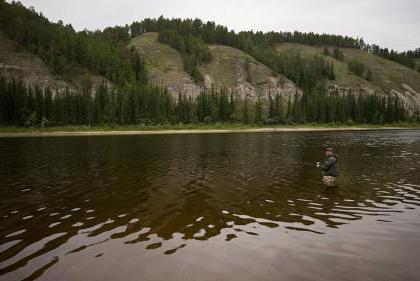
Another right tributary of the Lena, Aldan, is a fairly promising place for fishing. In its upper reaches there are taimen, whitefish, lenok, grayling, pike, burbot, chebak, perch, etc. In the middle reaches of the Aldan and its lower reaches there are also salmon, tugun, lamprey, vendace and Siberian sturgeon. The deep tributary of the Kele River is very popular among fishermen.
What kind of fish are found and where?
Every angler who thinks about fishing on the Lena asks the question: what kind of fish is found in this river? The Lena River is home to a huge variety of fish, both in species and size. You can catch it here:
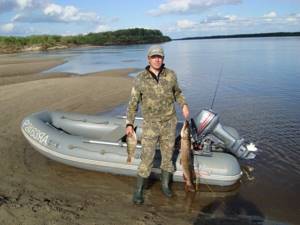
- Siberian sturgeon. It can be caught in the waters from Korshukov to Primorye;
- Taimen. This fish can be caught in any part of the river;
- Lenok. It is found mainly in the upper and middle parts of the river;
- Burbot. You can catch this fish in the seaside;
- Tugun. It can be caught along the entire length of the river;
- Peled. She lives in the lower part of the river;
- Whitefish. It can be caught in rivers up to the delta front;
- Chir. It can be found in the lower reaches;
- Grayling. It is found in the upper part of the river, just like ruff, pike, roach, dace and perch;
- Ide. Inhabits waters starting from the middle part of the river.
The most popular place for fishing in Yakutia. Here you can catch all of the above types of fish. There are quite large species of fish in Lena. Here you can find lenok weighing up to 6 kg, taimen - up to 8 kg, pike perch - up to 12 kg. And the largest representative is the pike, its weight can reach up to 20 kg.
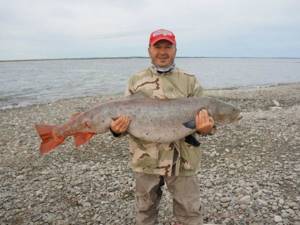
Winter fishing on the Lena
Once ice sets in, fishing on the river does not stop. The most adventurous lovers of “silent hunting” fish here even in severe frosts of 50 degrees. Winter fishing on the Lena is impossible without a tent. People drill holes in the 2-meter ice, place tents over them and light heaters. In such more or less comfortable conditions you can fish for several hours.
The main object for winter fishing in some tributaries is burbot. They catch it with spoons or other homemade gear. Fishing for vendace and other Yakut delicacy fish is very popular here. They are fished using nets installed under the ice. Local residents determine winter fishing time on the Lena River by the sun. Fishing is considered to be most favorable an hour before dawn.
In winter, many fishermen go to the Lena River for grayling. And although in cloudy weather this fish bites throughout the day, the ideal time for fishing is the evening hours, so experienced winter fishermen prefer to come to the river after dark.
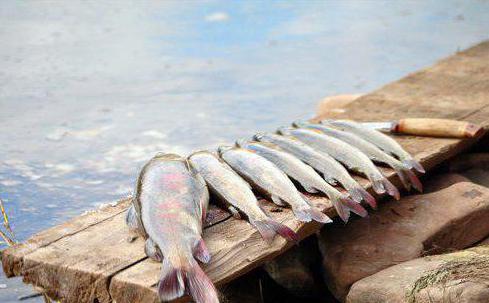
When fishing for grayling on ice, special attention should be paid to the bait. In order for this fish to bite, you need to bring it right under its nose. Therefore, local residents most often catch grayling using copper or golden jigs, the size of which is selected directly on the spot depending on the strength of the current.
Pike, the queen of rivers, begins to be caught on the first ice in early December, when it, actively stocking up on food, swallows everything that moves. Cloudy weather and a crust dusted with snow are considered optimal for fishing. Pike are caught here using girders equipped with a 0.7 mm fishing line, a tee and a soft metal leash.
Free fishing spots in the Republic of Sakha (Yakutia)
Buotama is an amazing body of water in the Republic of Sakha (Yakutia), where you can meet a large number of fishermen. Basically, almost all of them gather there in order to hunt for large pike, but there is also enough space in the reservoir for small and medium-sized fish. You can often find whitefish, grayling, dace and lenok in fishermen's catches.
The Lena River is one of the largest rivers flowing in the country, which attracts a huge number of fishermen with various gear along its banks. Local fishermen prefer to catch burbot here, of which there are large quantities in the reservoir. Lenok or loach are also often found. Pike, grayling and whitefish are also very frequent guests for spin fishing enthusiasts.
The small river Undyuling, which flows throughout almost the entire territory of the republic, very often attracts visiting fishermen. Locals here fish extremely rarely, as travel to the reservoir can be difficult. The main target of production in this reservoir is taimen. Many people say that the fish in the river reach incredible sizes, so you need to immediately prepare reliable gear.
The Olenyok River, originating from the Laptev Sea, is one of the wonderful bodies of water on the banks of which you can constantly meet fishermen. The main purpose of fishing in this place is the famous fish - taimen, which the locals call the owner of the river. You can also often find whitefish, lenok, nelma, tugun and grayling here. Fans of classic predator fishing will enjoy the local pike.

